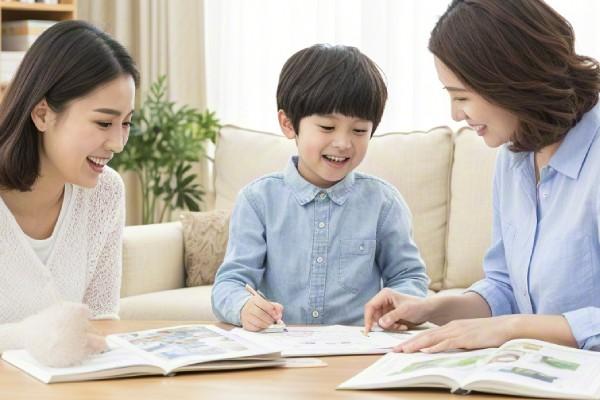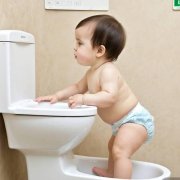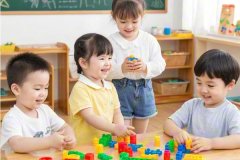Fun learning activities to do at home with your kids
Engaging in fun learning activities at home is a fantastic way to bond with your kids while fostering their curiosity, creativity, and critical thinking. Here are some unique and educational activities that go beyond the usual suggestions:

1. Create a "Mini Science Lab"
-
Turn your kitchen into a science lab with simple experiments. For example:
-
Make a baking soda and vinegar volcano.
-
Create a rainbow with a glass of water, a flashlight, and a white piece of paper.
-
Grow crystals using salt or sugar solutions.
-
-
Discuss the science behind each experiment to make it both fun and educational.
2. Host a "Book-to-Movie" Night
-
Choose a book your child loves and watch its movie adaptation together. Afterward, compare the two versions and discuss:
-
Which version did they prefer and why?
-
What details were left out or added?
-
How did the characters differ between the book and the movie?
-
3. Design a Family Time Capsule
-
Gather items that represent your family’s current life, such as photos, drawings, letters, or small toys. Place them in a sealed container and bury it in the backyard or store it in a closet.
-
Set a date to open it in the future and discuss how life might change by then.
4. Start a "Nature Journal"
-
Encourage your child to observe and document nature in a dedicated journal. They can:
-
Sketch plants, insects, or birds they see.
-
Write about the weather or seasonal changes.
-
Press leaves or flowers to include in their journal.
-
-
This activity promotes mindfulness and an appreciation for the natural world.
5. Build a Cardboard City
-
Use cardboard boxes, tubes, and other recyclable materials to create a miniature city. Include:
-
Buildings, roads, and parks.
-
Miniature cars, people, and animals.
-
-
Discuss urban planning, community roles, and environmental sustainability as you build.
6. Cook a Cultural Feast
-
Choose a country and research its traditional dishes. Cook a meal together while learning about the culture, language, and history of that country.
-
For example, make sushi while exploring Japanese culture or tacos while learning about Mexico.
7. Create a "Family History Scrapbook"
-
Gather old photos, documents, and stories from relatives. Work together to create a scrapbook that tells your family’s history.
-
This activity helps kids connect with their roots and learn about genealogy.
8. Invent a Board Game
-
Design a board game from scratch using cardboard, markers, and small objects as game pieces. Encourage your child to:
-
Create rules and objectives.
-
Design a theme (e.g., space exploration, jungle adventure).
-
-
Play the game together and refine the rules as needed.
9. Set Up a "Mystery Box" Challenge
-
Fill a box with random household items (e.g., a spoon, string, toy car). Challenge your child to create something new using only the items in the box.
-
This activity encourages creativity, problem-solving, and resourcefulness.
10. Learn a New Skill Together
-
Pick a skill neither of you has tried before, such as:
-
Knitting or crocheting.
-
Basic coding using online resources.
-
Playing a musical instrument.
-
-
Learning together makes the process more enjoyable and builds teamwork.
11. Create a "Weather Station"
-
Build simple tools to measure weather conditions, such as:
-
A rain gauge using a plastic bottle.
-
A wind vane from cardboard and a pin.
-
A thermometer using a glass of water and a straw.
-
-
Record daily weather observations and discuss patterns over time.
12. Host a "DIY Escape Room"
-
Create a series of puzzles and clues around your home that lead to a "treasure" or final goal. Themes could include:
-
A pirate adventure.
-
A spy mission.
-
A time-travel quest.
-
-
This activity enhances critical thinking and teamwork.
13. Write and Perform a Play
-
Work together to write a short script, create costumes, and build a simple stage. Perform the play for family members or record it to share with friends.
-
This activity boosts creativity, writing skills, and confidence.
14. Explore Astronomy at Home
-
On a clear night, stargaze and identify constellations using a star map or an app like SkyView.
-
Discuss the science behind stars, planets, and galaxies, and encourage your child to ask questions about the universe.
15. Start a "Kindness Project"
-
Brainstorm ways to spread kindness in your community, such as:
-
Writing thank-you notes to essential workers.
-
Creating care packages for neighbors.
-
Planting flowers in a public space.
-
-
This activity teaches empathy and the value of giving back.
16. Build a "Lego Engineering Challenge"
-
Set specific challenges, such as:
-
Building the tallest tower.
-
Creating a bridge that can hold weight.
-
Designing a vehicle that can move without wheels.
-
-
Discuss principles of engineering and physics as you build.
17. Create a "Family Podcast"
-
Record a podcast about topics your child is passionate about, such as:
-
Book reviews.
-
Fun facts about animals.
-
Interviews with family members.
-
-
This activity improves communication skills and creativity.
18. Design a "Dream Vacation"
-
Research a dream destination and plan a hypothetical trip together. Include:
-
A budget and itinerary.
-
Cultural activities and landmarks to visit.
-
Local foods to try.
-
-
This activity teaches geography, budgeting, and planning skills.
19. Experiment with Art Techniques
-
Try unique art projects, such as:
-
Creating marbled paper with shaving cream and food coloring.
-
Painting with unconventional tools like sponges, leaves, or toy cars.
-
Making collages from old magazines or fabric scraps.
-
-
Discuss different art styles and artists as you create.
20. Host a "Family Talent Show"
-
Encourage each family member to showcase a talent, whether it’s singing, dancing, telling jokes, or performing magic tricks.
-
This activity builds confidence and celebrates individuality.
These activities not only make learning fun but also create lasting memories and strengthen family bonds. Tailor them to your child’s interests and watch their curiosity and creativity flourish!
Engaging your kids in fun, educational activities at home not only helps them learn new skills but also strengthens the bond between you and your child. Here are some creative and high-quality activities that blend fun with learning, ensuring that your kids enjoy their time while developing new knowledge.
1. DIY Science Experiments
Turn your kitchen into a mini laboratory with simple science experiments. These hands-on activities spark curiosity and teach scientific principles in an entertaining way.
- Baking Soda Volcano: Use baking soda, vinegar, and food coloring to create a fizzy volcano eruption. This teaches kids about chemical reactions.
- Dancing Raisins: Place raisins in a glass of soda and watch as they float and sink repeatedly. This illustrates buoyancy and gas bubbles.
- Rainbow in a Jar: Layer liquids with different densities (like honey, dish soap, water, and oil) to create a colorful, stacked effect. This experiment helps children understand density and liquids.
2. Storytelling with Puppets
Make puppets from socks, paper bags, or even wooden spoons and have your kids create their own stories. This activity enhances creativity, language development, and social skills.
- Let your kids invent characters, set up scenarios, and act out their stories. You can also create a puppet show together, where each family member plays a part. This encourages imagination, problem-solving, and communication.
3. Cooking and Baking Together
Cooking not only teaches kids basic math and reading skills (e.g., measuring ingredients, following directions) but also provides an opportunity to practice fine motor skills and patience.
- Homemade Pizza: Allow your kids to shape their pizza dough and choose their toppings. This activity is both fun and instructional, helping them learn about food preparation, hygiene, and nutrition.
- Cupcake Science: When making cupcakes, discuss the science behind why baking soda and baking powder make them rise. You can even experiment with different recipes to see how the outcome changes.
4. Build a Mini Garden
Gardening is a wonderful hands-on activity that connects children to nature while teaching them about biology, responsibility, and the environment.
- Start with simple indoor plants or small herb gardens that kids can care for. Show them how to plant seeds, water them, and observe their growth over time.
- You can also create a fun garden by painting plant pots together and labeling the plants. As they watch their garden grow, they’ll learn about the life cycle of plants and the importance of taking care of nature.
5. Treasure Hunt with Clues
Organize an indoor or outdoor treasure hunt where children follow clues or solve puzzles to find a hidden treasure. This activity sharpens problem-solving, critical thinking, and observation skills.
- You can create riddles, picture clues, or even puzzles they have to put together to uncover the next clue. This also incorporates teamwork if you have multiple children, encouraging them to work together and share ideas.
6. Create an Art Gallery
Set up an art station with various supplies like paper, paints, markers, and glue. Encourage your kids to create their own art and then host an "art exhibition" at home.
- Teach them about famous artists and different art techniques. You can experiment with styles such as abstract, pointillism, or even recreate famous works like Van Gogh’s Starry Night using cotton swabs and tempera paints.
7. Learning through Music
Music is a fantastic tool for learning, offering lessons in rhythm, memory, and language development.
- Musical Chairs with a Twist: Play a game of musical chairs, but instead of just stopping the music, have your kids identify different sounds or instruments each time the music pauses. This helps them distinguish different sounds and improves auditory skills.
- DIY Instruments: Make simple instruments like maracas from rice-filled bottles, drums from containers, or a xylophone from tuned glass bottles. This can teach kids about sound, rhythm, and different musical instruments.
8. Math through Play
Incorporating math into everyday play helps children understand basic concepts without feeling like it’s a chore.
- Board Games: Classic games like Monopoly, Yahtzee, or even Snakes and Ladders involve counting, addition, and subtraction, which are fun ways to practice math.
- Number Hunt: Hide number cards around the house and ask your kids to find them and put them in order. For older kids, you can turn this into a math challenge by giving them equations to solve and hiding the answers.
9. Building Challenges with Blocks
If you have building blocks like Legos or wooden blocks, you can create structured challenges that promote spatial awareness, engineering skills, and creativity.
- Bridge Building Challenge: Ask your kids to build the strongest bridge with blocks that can hold a small toy or object. This teaches them about engineering principles like balance and weight distribution.
- Structure Building: Challenge them to build the tallest tower, a replica of a favorite building, or a creative structure, encouraging both imagination and problem-solving.
10. Make Your Own Board Game
Get creative by designing a custom board game. This activity involves planning, rule creation, and artistic design while teaching kids how to follow and make decisions.
- Use a large sheet of paper for the board, and let your kids draw paths, create rules, and design cards. You can base the game on anything from family history to their favorite story. This activity improves decision-making, creativity, and fine motor skills.
11. DIY Obstacle Course
Create an indoor or outdoor obstacle course using pillows, chairs, and other household items. Have your kids navigate through the course to reach the "finish line" and time them to see if they can improve their speed.
- This physical activity promotes gross motor skills, coordination, and following directions. It can also turn into a fun competition where siblings race against each other.
12. Reading and Writing Together
Reading aloud and writing activities are excellent ways to strengthen literacy skills while also fostering a love for stories.
- Reading Time: Pick a few age-appropriate books to read together and discuss the themes, characters, and lessons. For older children, encourage them to read aloud and ask questions to improve comprehension.
- Creative Writing: Help your kids create their own short stories or poems. You can start by giving them a prompt or allow them to come up with their own. This activity promotes language skills and sparks their imagination.
13. Puzzle Time
Puzzles are a great way to promote problem-solving skills, patience, and attention to detail.
- Jigsaw Puzzles: Choose puzzles that are age-appropriate and build them together. Start with simpler puzzles and gradually increase the difficulty as your kids get better at it.
- DIY Puzzle: Create your own puzzles by cutting pictures or old greeting cards into pieces and asking your kids to put them together.
14. Cultural Exploration
Teach your kids about different cultures around the world through food, music, and storytelling.
- Pick a country or culture to explore, and make a dish together that’s popular in that region. You could also listen to traditional music from that culture or read folktales to make the learning experience more immersive.
15. Mindfulness and Yoga for Kids
Teaching mindfulness and yoga to children helps them relax, focus, and improve their physical flexibility and mental clarity.
- Use simple poses and breathing exercises designed for kids. You can play calming music and encourage your kids to focus on their breathing, helping them learn to manage emotions and improve concentration.
These activities not only help children develop academically but also encourage them to use their creativity and critical thinking skills. The key is to make learning enjoyable and interactive, so they can discover the joy of learning while having fun at home!









